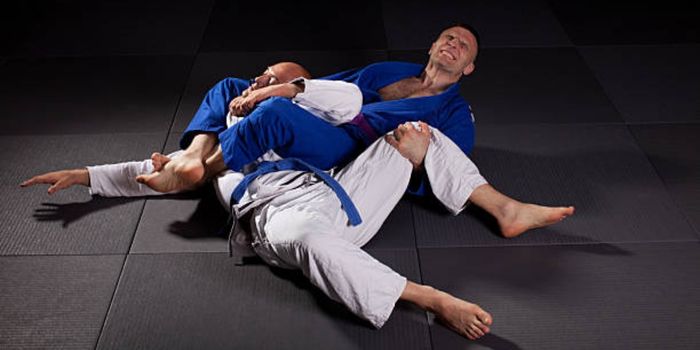In the dynamic world of Brazilian Jiu-Jitsu (BJJ), where techniques constantly evolve, the Twister stands out as a formidable submission that has captured the attention of practitioners worldwide. Originating from wrestling, the Twister has found its place in BJJ, earning recognition for its effectiveness and versatility on the mats. This blog aims to delve into the intricacies of the Twister, offering a comprehensive guide to mastering this unique submission in BJJ.
Understanding the Twister BJJ
The Twister in BJJ traces its roots back to wrestling, where it was initially utilized as a pinning maneuver. Over time, BJJ practitioners adapted and refined the technique, incorporating it into their arsenal of submissions. At its core, the Twister involves manipulating the opponent’s spine and neck to apply excruciating pressure, compelling them to submit.
To execute the Twister effectively, one must understand its technical nuances. This includes mastering the grip, which involves securing control over the opponent’s upper body while maintaining balance and stability. Body positioning plays a crucial role, as practitioners aim to twist and torque their opponent’s spine while maintaining control over their lower body.
Anatomy-wise, the Twister primarily targets the spine, subjecting it to immense torsion and compression. The resulting spinal lock induces discomfort and pain, compelling the opponent to concede defeat or risk injury. Understanding the mechanics behind the Twister is essential for both executing and defending against this submission.

Benefits of Learning the Twister Submission
Integrating the Twister submission into your BJJ repertoire offers a multitude of benefits. In addition to its effectiveness as a submission technique, mastering the Twister enhances your overall grappling proficiency. By honing your control, flexibility, and submission skills, you become a more well-rounded practitioner capable of handling various scenarios on the mats.
Moreover, the Twister holds practical value beyond the confines of the gym. In self-defense situations, where control and restraint are paramount, the ability to execute the BJJ Twister can prove invaluable. Its application extends to real-life scenarios, where the principles of leverage and manipulation can be employed to neutralize threats effectively.
Step-by-Step Guide to Mastering the BJJ Twister
Mastering the Twister in Brazilian Jiu-Jitsu (BJJ) requires a systematic approach that encompasses both technical precision and strategic execution. In this section, we’ll provide a comprehensive step-by-step guide to help you understand and master the intricacies of the Twister submission technique.
Credit: Howcast
Setup and Grip:
- Begin from a dominant position such as side control or back control.
- Secure control of your opponent’s upper body, ensuring a tight grip on their neck and arm.
- Establish a strong base to prevent counterattacks.
Body Positioning:
- Shift your weight to control your opponent’s movement effectively.
- Maintain proper alignment to exert maximum pressure on the spine.
- Position yourself perpendicular to your opponent to optimize leverage.
Entry into the Twister:
- Transition smoothly from controlling position to initiating the Twister.
- Slide your leg across your opponent’s body to trap their hip.
- Secure a strong grip on your opponent’s leg to prevent escape.
Twisting Motion:
- Engage your core muscles to generate rotational force.
- Apply controlled pressure to initiate the twisting motion, targeting the opponent’s spine.
- Maintain balance and stability throughout the technique.
Submission Finish:
- Gradually increase the pressure on your opponent’s spine, eliciting discomfort and potential submission.
- Apply leverage to induce the desired reaction from your opponent.
- Continuously adjust your position and pressure to secure the submission without compromising control.
Transitioning and Escapes:
- Anticipate your opponent’s reactions and adjust your technique accordingly.
- Be prepared to transition to alternative submissions or positions if the Twister is countered.
- Practice escaping from the Twister to develop a well-rounded defense.

Drills and Repetition:
- Dedicate focused training sessions to drilling the Twister technique.
- Start with slow, controlled repetitions to refine your mechanics and timing.
- Gradually increase the intensity and speed of your drills to simulate real-life scenarios.
Seek Feedback and Correction:
- Solicit feedback from experienced practitioners and instructors to fine-tune your technique.
- Analyze video recordings of your practice sessions to identify areas for improvement.
- Embrace constructive criticism as an opportunity for growth and refinement.
Consistent Practice:
- Incorporate Twister-specific drills into your regular training regimen.
- Practice the Twister from various positions and transitions to develop versatility.
- Aim for consistency and persistence in your pursuit of mastering the Twister technique.
By following this step-by-step guide and incorporating dedicated practice into your BJJ training, you’ll gradually enhance your proficiency in executing the Twister submission technique with precision and confidence.
Drills and Training Methods
To refine your Twister technique, incorporate specific drills and training routines into your regimen. Partner drills allow practitioners to simulate live scenarios, refining their timing and reactions. Solo drills focusing on movement and body mechanics help develop muscle memory, enhancing fluidity in executing the Twister.
Positional sparring exercises provide a controlled environment for practitioners to practice the Twister from various positions, honing their adaptability and problem-solving skills. Consistent drilling is key to internalizing the nuances of the Twister, ensuring proficiency when it counts.

Applying the Twister in BJJ Competitions
In the heat of competition, the Twister can serve as a potent weapon in your arsenal. Strategically incorporating the Twister into your game plan requires a keen understanding of timing and opportunity. Recognize openings where the Twister can be seamlessly integrated, capitalizing on your opponent’s positioning and reactions.
Successful implementation of the Twister in high-level competitions demonstrates its effectiveness at the highest echelons of BJJ. By studying these examples and refining your technique through dedicated practice, you can elevate your competitive game and leave a lasting impression on the mats.
Conclusion
Mastering the Twister in BJJ represents more than just acquiring a new submission technique—it signifies a deeper understanding of leverage, control, and manipulation. By embracing the principles underlying the Twister, practitioners can unlock new avenues for growth and development on their journey in BJJ. As you embark on this path, remember that mastery is a continuous process, requiring dedication, perseverance, and an unwavering commitment to improvement.
Frequently Asked Question's
Q1: What does a twister do in BJJ?
In Brazilian Jiu-Jitsu (BJJ), the Twister is a submission technique used to apply pressure on the opponent’s spine, particularly targeting the cervical vertebrae. When executed correctly, the Twister can cause intense discomfort and pain, potentially leading to a submission victory.
Q2: Is Twister allowed in IBJJF?
No, the Twister is not allowed in competitions sanctioned by the International Brazilian Jiu-Jitsu Federation (IBJJF). IBJJF rules prohibit certain submission techniques deemed excessively dangerous or risky for competitors’ safety, and the Twister falls under this category.
Q3: How to do the Twister in jiu-jitsu?
Executing the Twister in jiu-jitsu involves several steps:
- Begin from a dominant position such as back control or side control.
- Secure control of your opponent’s upper body, including their neck and arm.
- Transition smoothly to trap your opponent’s hip with your leg.
- Apply rotational force while maintaining pressure on the opponent’s spine to complete the Twister submission.
Q4: Who did the first Twister in UFC?
The first Twister submission in UFC history was executed by Korean mixed martial artist Chan Sung Jung, also known as “The Korean Zombie.” He successfully applied the Twister against Leonard Garcia at UFC Fight Night: Nogueira vs. Davis on March 26, 2011.
Q5: What damage could the Twister do?
The Twister primarily targets the cervical spine, exerting pressure on the vertebrae and surrounding soft tissues. If applied with sufficient force and leverage, the Twister can cause severe discomfort, muscle strain, and potential injury to the cervical spine, leading to long-term damage if not properly addressed.
Q6: What happens if you don't tap to a Twister?
Failing to tap to a Twister submission can result in serious consequences, including potential injury to the cervical spine and surrounding musculature. Refusing to tap increases the risk of sustaining long-term damage, such as strained muscles, ligament tears, or even spinal misalignment. It is crucial to prioritize safety and tap out when caught in a Twister to prevent injury.


